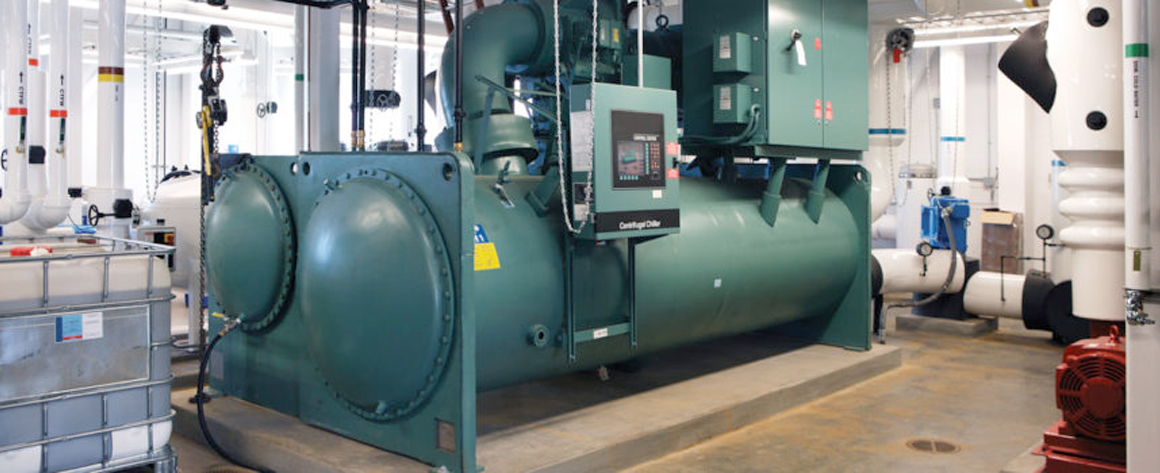Left unchecked, refrigerant leaks in machinery rooms or other confined spaces can be dangerous. And while there are a variety of reasons for employing refrigerant gas detectors (reducing costs, protecting the environment, optimizing energy efficiency), one of the foremost reasons remains compliance with safety standards like EN 378, ASHRAE 15 and CSA B52.
Left unchecked, refrigerant leaks in machinery rooms or other confined spaces can be dangerous. And while there are a variety of reasons for employing refrigerant gas detectors (reducing costs, protecting the environment, optimizing energy efficiency), one of the foremost reasons remains compliance with safety standards like EN 378, ASHRAE 15 and CSA B52.
EN 378 Refrigerant Safety Compliance
Depending on the gas used, the dangers presented by leaking refrigerant can include asphyxiation, oxygen depletion, flammability and toxicity. In Europe, the applicable refrigeration safety standard is EN 378, Refrigerating Systems and Heat Pumps – Safety and Environmental Requirements.
Of the four parts of EN 378, the standard pertaining to refrigerant gas detection is EN 378-3:2016, Installation Site and Personal Protection. Within a commercial refrigeration environment, the primary areas of concern (regarding safety and refrigerant leaks) are:
- Refrigeration Machinery / Mechanical Equipment Rooms
- Walk-in Freezers / Cold Rooms
Requirements for Refrigerant Gas Detection in Refrigeration Machinery Rooms
What does the standard say about leak detection in refrigeration machinery rooms? Section 9.1 of EN 378-3:2016 states that “When the concentration of the refrigerant can exceed the practical limit in accordance with EN 378-1:2016, Annex C, detectors shall at least actuate an alarm and in the case of a machinery room the emergency mechanical ventilation.”
This is followed up by a clause in Section 9.2, stating “At least one detector shall be installed in each machinery room or the occupied space being considered.” Machinery / mechanical equipment rooms are clearly called out by the standard text. With regard to occupied spaces, these are defined by access category in EN 378-1:2016, Section 5. Cold rooms are explicitly highlighted within Access Category C – Authorized Access.
Based on these definitions, one can summarize that both refrigeration machinery rooms and cold rooms have a requirement for refrigerant leak detection where the amount of refrigerant that could leak into space can rise to concentration within that space which is higher than the defined practical limit for the refrigerant in question. This will be the case in the majority of commercial refrigeration applications which use a centralized refrigeration system for all a facility’s cooling needs, and leak detection will be necessary.
Gas Detector Features Required by EN 378
It is then important to consider what the refrigerant gas detectors need to do when the target gas is detected. EN 378-3:2016, Section 8.3 highlights this requirement and states:
- The alarm system shall warn both audibly and visibly such as both a loud (15db(A) above the background level) buzzer and a flashing lamp.
- For a machinery room the alarm system shall warn both inside and outside the machinery room. The alarm outside the machinery room may be installed in a supervised location.
- For an occupied space, the alarm shall warn at least inside the occupied space.
What we can determine from this is that EN 378 requires audible / visual (A/V) alarms be present inside and outside of a machinery room, but only inside a cold room. However, it is common practice to install A/V alarms outside of cold rooms as well, in order to warn personnel who may be entering a potentially dangerous space.
Tips for Selecting a Gas Detection System that Meets EN 378 Requirements
There is no shortage of choices when it comes to selecting a refrigerant gas detection system. However, diffusion-based instruments are the most common choice for regulatory / safety compliance applications. These instruments continuously monitor a single point, which presents an economically attractive option for achieving the desired result of safety standard compliance.
That being said, not all gas detection solutions are created equal and some thought should be given to what makes a good system for safety compliance. Some keys areas of focus include:
- Integrated Audible / Visual Alarms
- Available Outputs and Communications
- Intuitive Configurability
- Simple Maintenance and Calibration
Audible / Visual Alarms
EN 378 clearly stipulates the need for A/V alarms inside both machinery rooms and cold rooms. While A/V alarms can be driven by a centralized controller, selecting a gas detector that has integrated (on-board) audio-visual alarms is an attractive option.
This complies with the standard, without necessitating the use additional hardware within the monitored space, which incurs cost both in terms of the hardware itself and its installation.
Outputs & Communications
The requirement for refrigeration machinery rooms (and typical best practice for cold rooms) is to have additional A/V alarms outside of the monitored space. This means that it is important to consider what communication options and outputs are available from the refrigerant detector in the event of an alarm being triggered.
Digital / Analog Communications
Relays can be used to trigger additional horn / strobes directly, and in an ideal case these can be low powered devices powered directly from the gas detector (lowering the cost of electrical installation). Additional communication options are often desirable, such as Modbus for communicating with a refrigeration controller or a BMS / BAS.
Ease of Installation
One should give additional consideration to the ease of wiring these communications. Multiple cable glands and wiring terminals can make it easy to daisy-chain both power and Modbus, as well as connecting relays for alarm and fault status. This can save significant time and money when installing the system.
Device Configuration
It can be important for a refrigerant gas detector to be fully configurable. This can include:
- Setting of different alarm thresholds to instigate different actions
- Configuring alarm behavior for manual or automated reset
- Setting alarm delays to prevent false alarms (due to transient cross-interference)
- Configuring digital communication settings
Many legacy devices require the use of voltmeters, potentiometers and jumpers on circuit boards or programming via DIP switches. This can require a significant amount of training to perform correctly.
Intuitive Mobile Interfaces
In the increasingly digital world of communications technology, it now becoming more accessible to use intuitive mobile applications that link directly to devices for programming and configuration. These apps simplify the process and add an additional layer of security (through password protection). EN 378-3:2016, Section 9.4, states that “The gas detector shall be protected to prevent tampering or unauthorized resetting of the pre-set value.”
Maintenance & Calibration
EN 378 requires that gas detectors shall:
- Have an appropriate maintenance period established (EN378-3:2016, 9.3.1)
- Should be installed to allow for checking, repair or replacement
- Be able to be functionally tested (EN 378-3:2016, 9.4)
The main maintenance requirement for a gas detector will usually be a periodic calibration, and in some cases a replacement of the sensor element (some have limited lifespan). Much like configuration processes, the calibration of gas detectors has often required interference with circuit boards to make manual adjustments. This can easily be done incorrectly.
Selecting a system where the calibration gas data is entered (ideally by scanning the gas bottle to automatically populate the data) and then all adjustments are made electronically makes this process more user friendly and hard to do incorrectly. Again, leak detectors using a mobile application can make this activity very straightforward.
Pre-calibrated Sensor Modules
Furthermore, manufacturers are in some cases now able to offer plug-and-play pre-calibrated sensor modules for simple field exchange. This entirely removes the need for field calibration and provides significant time savings. A typical calibration may typically take 25 minutes per detector to perform; a sensor exchange can be done in fewer than 5 minutes.
Pre-calibrated sensor modules also allow for a simple update of the detection system in an instance where the refrigerant is changed for a newer, lower Global Warming Potential (GWP) option.
Going Beyond Refrigeration Safety Standards
It is important to comply with refrigeration safety standards. They are in place to protect persons working in and around your facility’s refrigeration systems. Ensuring the correct measures are in place to detect and alert in the event of potentially dangerous refrigerant leak is just one part of this equation.
And while there are many gas detectors on the market, careful consideration of their suitability for regulatory compliance (as well as their configurability and maintainability) can make this a straightforward solution. This allows one to focus on the many other important aspects of refrigeration system safety, maintenance and operation.



